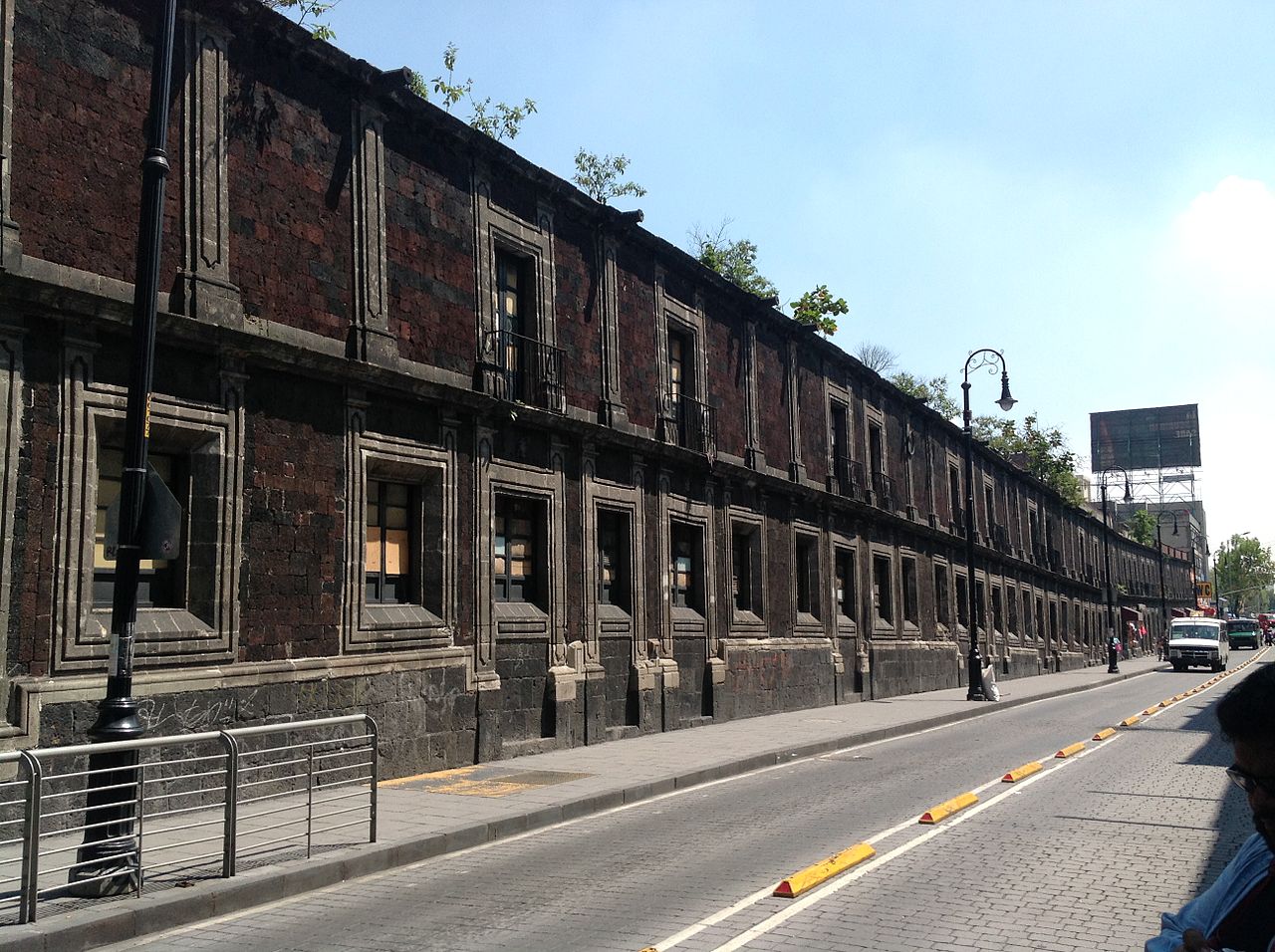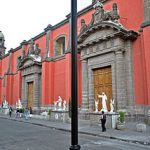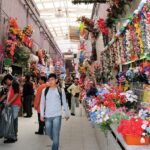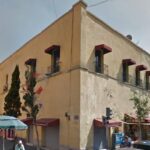
__
Las Casas de los Camilos o las Calderas, The Camilos or Calderas Homes, are the remaining group of houses built to provide funds to the Camillian Monastery on Calle Regina. Dating from the late 18th century and early 19th century, the row of houses can’t help but strike a chord for their simplicity, uniformity, and Baroque splendor. Originally built to provide rental income, they were declared a historical monument in July of 1931.
The Order of Camillians arrived in colonial Mexico in the 16th century. They arrived to fulfill the dying wish of Doña María Teresa de Medina y Saravia. Felipe Cayetano de Medina, with 30,000 pesos to bring the order, was fiercely dedicated to the care of the dying to spread their work in Mexico. He added another 50,000 pesos and the Camilians arrived in 1755. They bought a house and some adjacent land near the Temple of San Pablo from the Spanish merchant, Manuel de Calderas . Their monastery soon took shape, the last one of the colonial era and perhaps the most modest. It was built between 1756 and 1778. Classrooms, rooms to care for patients, a cemetery, an orchard, warehouse, stables, and a church were all dedicated in 1756.
The Calderas houses were built later. Six were on Calle Regina, and the seven we see today on San Jerónimo. The Camillians were suppressed after Mexican Independence. Although they did re-establish themselves briefly in 1834, Reform Laws forced the few remaining to abandon their complex entirely. The monastery was subdivided. A 1909 seminary building went up on Calle Regina, and this forced the demolition of most of the remaining Camillian Monastery. The seminary occupied that building until 1928 when it was converted into Mexico’s first federal middle school, The Cesar A. Ruiz School which still exists today. The Calderas houses were converted into low-income housing at the beginning of the 20th century.
The España Elementary School, within the Casas de los Camilos o las Calderas was remodeled in early 2014. This included a cleaning of the tezontle and quarry-stone facade. In truth, it’s just one part of a magnificent stretch of late 18th century housing.

0.09 kms.

0.13 kms.

0.15 kms.

The market for clothing, formal wear and evening wear in Mexico City's center.

One of the city center's most illustrious former convents is still a sight to see.

Just a few steps outside the south exits of the Mercado de Sonora...

La Merced is the classic, and some will argue, the only public market in Mexico City. If you miss out on this one, you're missing out on a lot!

An unassuming corner on Talavera street was home to one of New Spain's most fiery insurrectionists.